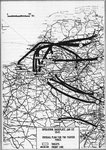MikeGazdik
Senior Airman
It was a waste of planes and pilots. Now, if somehow they could have sent all of those fighters across the Channel and hit only the 4 engined bomber bases, it may have had more of an affect maybe. But it was too little, too late regardless. You cannot win a war, while only in a defensive posture. And since around 43 or so, the Luftwaffe was primarily defensive. (in the West)

